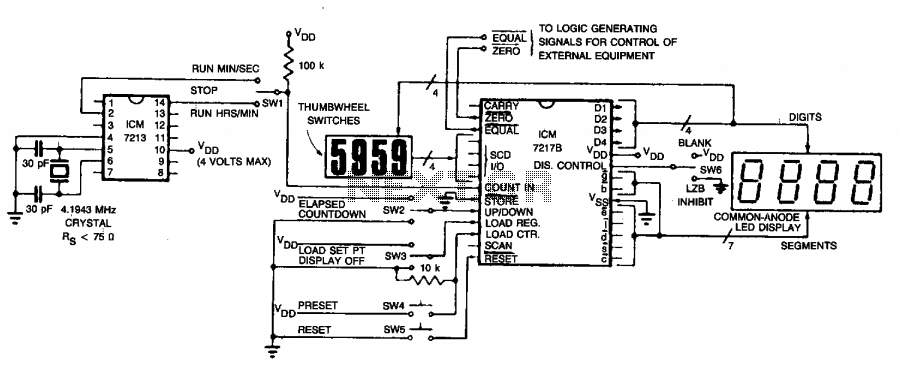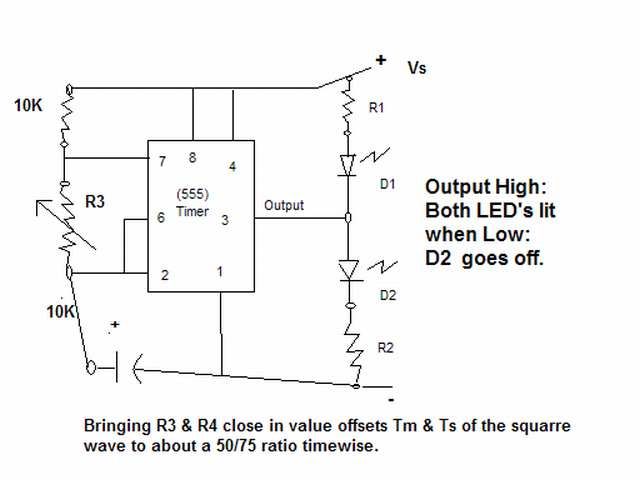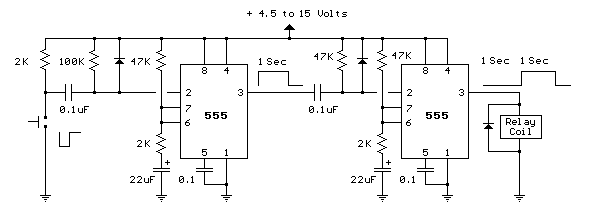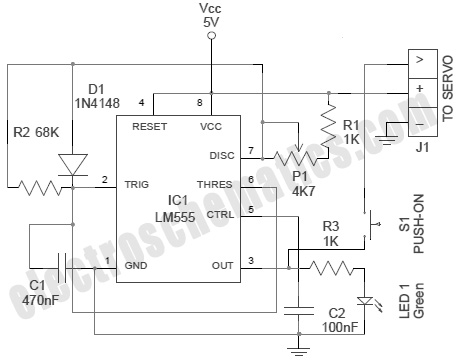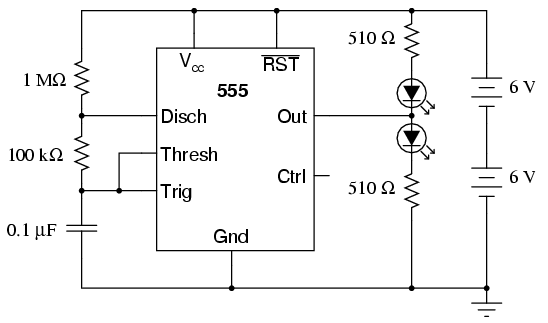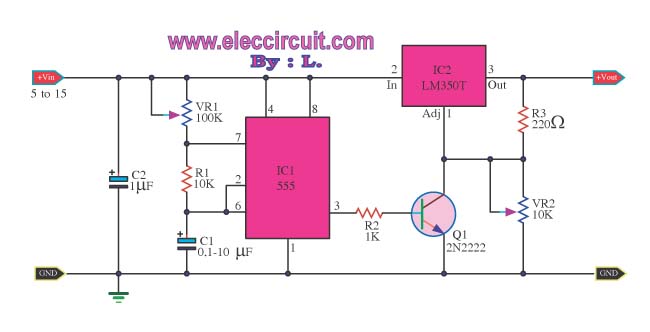
555 Timer IC For RF Sweeper

The following circuit illustrates the use of a 555 Timer IC for an RF sweeper application. Features include the utilization of a 1N4004 diode and a JF1OZL, which employs a potentiometer for precise frequency control.
The circuit utilizes the 555 Timer IC, configured in astable mode, to generate a continuous square wave output. This output can be adjusted to sweep through a range of frequencies, making it suitable for RF applications such as signal scanning or interference testing. The 1N4004 diode serves as a protective component, preventing reverse voltage spikes that could damage the timer IC or other components in the circuit.
The JF1OZL, a specific type of RF oscillator, is integrated into the design to enhance the frequency tuning capabilities. A potentiometer is included in the circuit, allowing for fine adjustments to the frequency output. This feature is particularly useful in RF applications where precise frequency control is essential for effective operation.
The overall design emphasizes stability and reliability, with the 555 Timer providing a robust solution for generating the desired RF signals. The combination of the timer IC, diode, and potentiometer creates a versatile circuit capable of meeting various RF sweeping requirements. Proper layout and component selection will ensure optimal performance and longevity of the circuit in practical applications.The following circuit shows about 555 Timer IC For RF Sweeper. Features: used a 1N4004 Diode, JF1OZL uses a pot for a fine frequency control .. 🔗 External reference
The circuit utilizes the 555 Timer IC, configured in astable mode, to generate a continuous square wave output. This output can be adjusted to sweep through a range of frequencies, making it suitable for RF applications such as signal scanning or interference testing. The 1N4004 diode serves as a protective component, preventing reverse voltage spikes that could damage the timer IC or other components in the circuit.
The JF1OZL, a specific type of RF oscillator, is integrated into the design to enhance the frequency tuning capabilities. A potentiometer is included in the circuit, allowing for fine adjustments to the frequency output. This feature is particularly useful in RF applications where precise frequency control is essential for effective operation.
The overall design emphasizes stability and reliability, with the 555 Timer providing a robust solution for generating the desired RF signals. The combination of the timer IC, diode, and potentiometer creates a versatile circuit capable of meeting various RF sweeping requirements. Proper layout and component selection will ensure optimal performance and longevity of the circuit in practical applications.The following circuit shows about 555 Timer IC For RF Sweeper. Features: used a 1N4004 Diode, JF1OZL uses a pot for a fine frequency control .. 🔗 External reference
